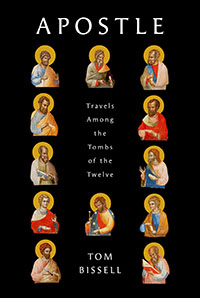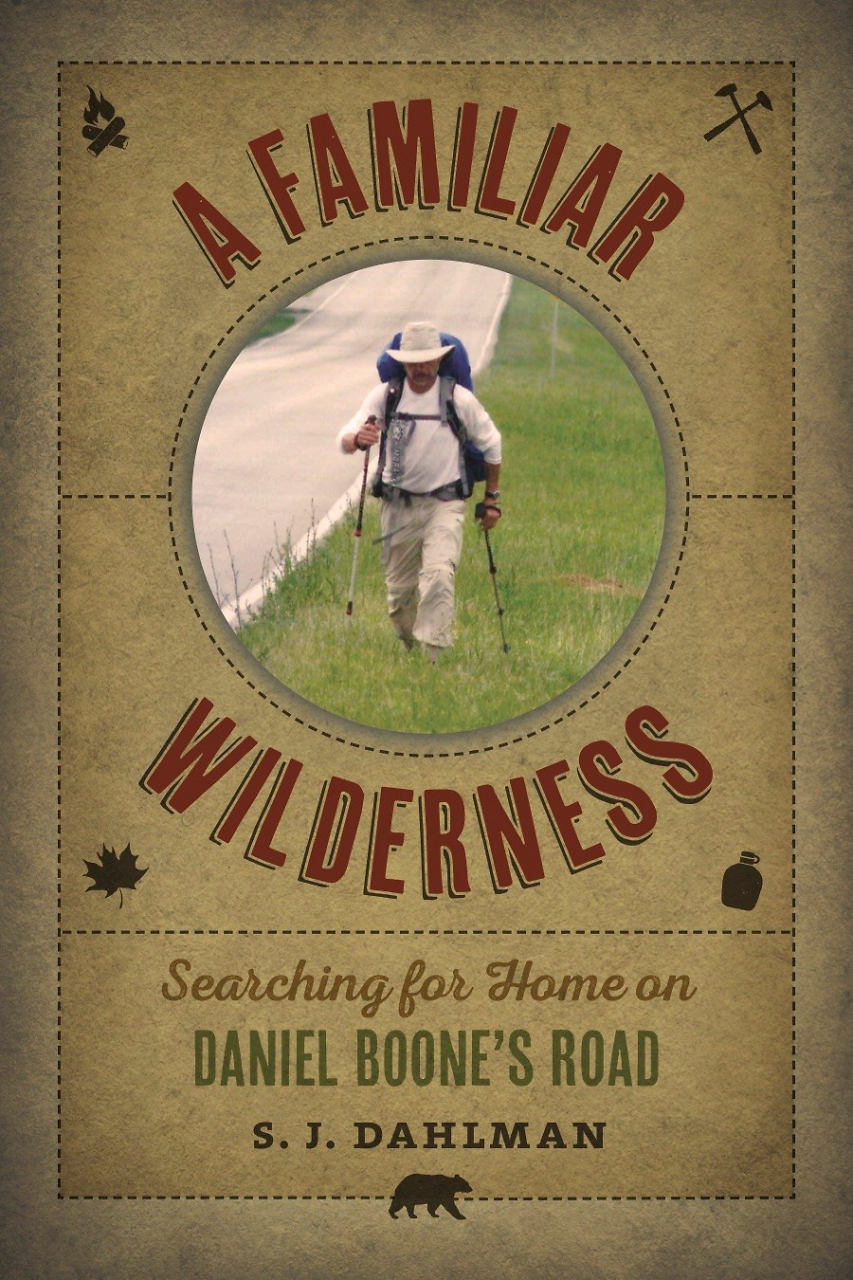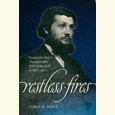A Story that Bears Retelling
In Apostle, Tom Bissell journeys into the contradictory history of early Christianity
From 2007 to 2010, the celebrated essayist, journalist, and fiction writer Tom Bissell journeyed to the tombs of the twelve apostles of Jesus Christ “in an effort to explore the legendary encrustation upon twelve lives about which little is known and even less can be historically verified.” With Apostle: Travels Among the Tombs of the Twelve, Bissell examines the convoluted, frequently bizarre histories of each apostle, blending scholarship, literary criticism, and personal narrative to create a surprisingly riveting meditation on the fraught relationship between fact and faith.
 Bissell admits from the outset that Apostle is a project rooted in paradox: once a devout Catholic, Bissell lost his own faith, “suddenly and decisively,” at the age of sixteen. He nevertheless retained his fascination with Christianity, and so Apostle is imbued with a powerful subtext: the ex-Christian’s obsessive desire to understand the roots of the faith that once held such power over his imagination, and that still looms large in both his consciousness and conscience.
Bissell admits from the outset that Apostle is a project rooted in paradox: once a devout Catholic, Bissell lost his own faith, “suddenly and decisively,” at the age of sixteen. He nevertheless retained his fascination with Christianity, and so Apostle is imbued with a powerful subtext: the ex-Christian’s obsessive desire to understand the roots of the faith that once held such power over his imagination, and that still looms large in both his consciousness and conscience.
Despite Apostle’s straightforward structure—a dozen chapters devoted to one or more of the original Apostles, along with intermissions devoted to Paul and Jesus himself—a reader may be forgiven for feeling at times inadequate to the task of keeping up with Bissell’s wide-ranging, hyperkinetic intellect. Given the book’s expansiveness and its author’s tendency to digress without warning into obscure esoterica, Apostle is surprisingly engrossing. Its real strength lies in Bissell’s lively voice, which veers wildly from sincerity to irony as Bissell plumbs the complex and controversial legacy of the world’s largest faith. What Bissell is after, really, is an objective recorded history about a subject that is little supported by verifiable facts: “History, in many ways, comes into being as a contrast between interested and disinterested witnesses,” Bissell writes. “Early Christian history is marked by its comprehensive absence of disinterested witnesses.”
Tom Bissell can hardly claim to be a disinterested witness himself, however: his chief recurring frustrations are many Christians’ ignorance of their own religion’s history and their obstinacy when confronted with historical details that either cast their dogmas into doubt or refute them outright. Near the end of his pilgrimage, in the crypt of a church in Toulouse said to hold the remains of Simon the Canaanite and Jude, Bissell encounters a pair of young Americans that he describes as “freshly toothbrushed and unnaturally clean, like Mr. and Mrs. Leisure Traveler on their way to a travel magazine cover shoot.” Striking up a conversation, he discovers that the young woman studied the Bible while a student at Cornell. “A person visiting a Christian church who knew something about Christianity,” Bissell dryly reports. “It had taken me four years, but I finally found her.”
 Nevertheless, Bissell’s attitude toward believers is more often than not deeply empathetic and respectful. Outside the ruins of St. John’s Basilica in Turkey, for example, he encounters a young Irishwoman and her teenaged son. The boy’s father has died recently, and they are visiting the ruins to celebrate his memory. “It felt good, suddenly, to be reminded,” Bissell writes, “that the untrue could abide with the true as the believer abided with the unbeliever, and that a widow and son too young to lose his father did not need to choose anything right now but how best to honor the ghost they believed could look down upon them from the paradise of their understanding.”
Nevertheless, Bissell’s attitude toward believers is more often than not deeply empathetic and respectful. Outside the ruins of St. John’s Basilica in Turkey, for example, he encounters a young Irishwoman and her teenaged son. The boy’s father has died recently, and they are visiting the ruins to celebrate his memory. “It felt good, suddenly, to be reminded,” Bissell writes, “that the untrue could abide with the true as the believer abided with the unbeliever, and that a widow and son too young to lose his father did not need to choose anything right now but how best to honor the ghost they believed could look down upon them from the paradise of their understanding.”
There’s an undeniable longing in the way Bissell describes the Irish mother and son, or the young evangelical from Tennessee with whom he enjoys a few beers and a lively debate over the divine authority of New Testament scripture. “That’s God doing the talking,” the young man exclaims. “[The apostles] were his vessel.” Bissell knows better—Apostle cites mountains of scholarship that dispute the authority of not just the texts but, in many cases, their authors’ identities—and yet their power for the young man and billions of others is unimpeachable. “What if,” Bissell writes, “a story was enough for a thing to be?”
Like a lot of writers, he ultimately concludes that what matters is the story, not the truth, and his admiration for the text is undeniable. “The gospels, despite some considerable literary inadequacies,” Bissell writes, “have structure, contrapuntal detail, rhythm, and style. This helps them remain grippingly relevant to millions of people, most of whom know nothing about life in first-century Palestine or the complicated manner in which Jewish and Greek thought enriched each other in the Roman world.”
Bissell is far from the first to argue that the spread of Christianity and its continuing allure owe much to the New Testament’s stylistic strengths. Still, his discussions of specific stories in the gospels become dramatically relevant in light of how lucidly they demonstrate the way narrative influences history. The question of who these men really were and what they actually said and did, Bissell insists, has implications far beyond the theological. The oft-reviled Judas, after all, fueled the fires of antisemitism in Europe that led to the pogroms and, eventually, the Holocaust—but so did the writings assigned to the beloved John, who, despite his popular reputation as “the disciple Jesus loved,” could be incendiary in his condemnation of his fellow Jews.
“All beliefs have moral insinuations,” Bissell argues, “and all representations have political repercussions.” And yet the overarching tone of Apostle is a peculiar variation of hope. Questions lead to stories, Bissell suggests, and stories feed faith. “Nothing is more predictable, more unpredictable, more agelessly, familiarly alien, than the human mind,” Bissell writes. “We want. We long. We imagine. We fight. We gather. We love. We hate. We lie. We believe.”

Ed Tarkington is the author of the debut novel Only Love Can Break Your Heart, published by Algonquin Books in January 2016. He lives in Nashville.


